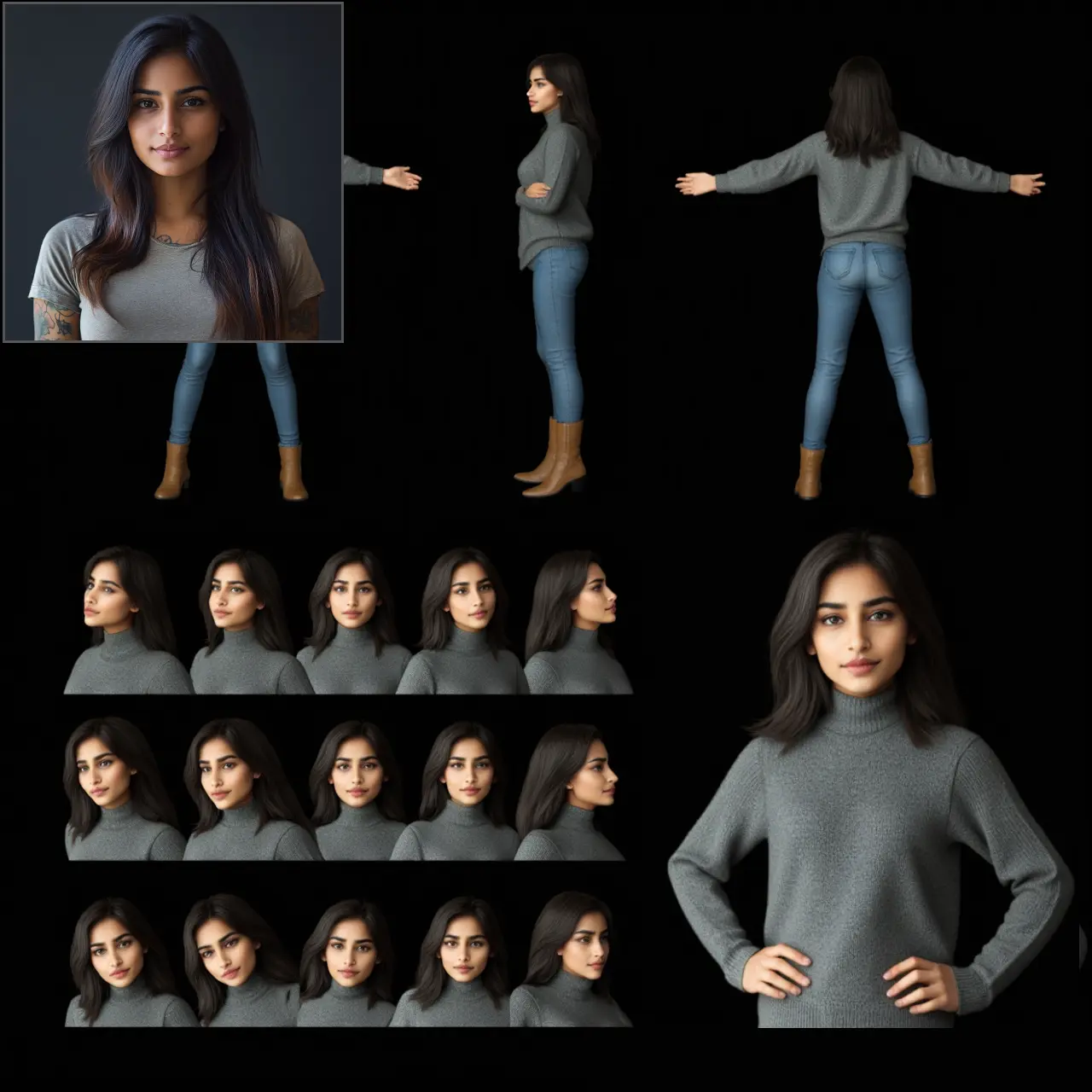ComfyUI Node: BasicPipe -> DetailerPipe
BasicPipeToDetailerPipe
CategoryImpactPack/Pipe
Dr.Lt.Data (Account age: 747days) Extension
ComfyUI Impact Pack Latest Updated
2025-03-23 Github Stars
2.28K
How to Install ComfyUI Impact Pack
Install this extension via the ComfyUI Manager by searching for ComfyUI Impact Pack- 1. Click the Manager button in the main menu
- 2. Select Custom Nodes Manager button
- 3. Enter ComfyUI Impact Pack in the search bar
Visit ComfyUI Online for ready-to-use ComfyUI environment
- Free trial available
- 16GB VRAM to 80GB VRAM GPU machines
- 400+ preloaded models/nodes
- Freedom to upload custom models/nodes
- 200+ ready-to-run workflows
- 100% private workspace with up to 200GB storage
- Dedicated Support
BasicPipe -> DetailerPipe Description
Enhance basic pipelines with advanced detailing features in ComfyUI-Impact-Pack framework.
BasicPipe -> DetailerPipe:
The BasicPipeToDetailerPipe node is designed to facilitate the transition from a basic pipeline to a more detailed and refined pipeline within the ComfyUI-Impact-Pack framework. This node is particularly useful for AI artists who want to enhance their basic image processing pipelines by incorporating more advanced detailing features. By using this node, you can seamlessly integrate additional models and conditioning elements that provide finer control and improved results in your image generation tasks. The primary goal of this node is to enrich the basic pipeline with detailed processing capabilities, thereby enhancing the overall quality and precision of the output.
BasicPipe -> DetailerPipe Input Parameters:
model
The model parameter represents the primary model used in the basic pipeline. This model is responsible for the initial image generation process. It is crucial to select a model that aligns with your desired output style and quality. There are no specific minimum or maximum values, but the choice of model significantly impacts the final result.
clip
The clip parameter refers to the CLIP (Contrastive Language-Image Pre-Training) model used for conditioning the image generation process. This model helps in aligning the generated images with the provided textual descriptions, ensuring that the output is contextually relevant. The selection of the CLIP model should be based on the specific requirements of your project.
vae
The vae parameter stands for Variational Autoencoder, which is used to encode and decode images during the generation process. This component is essential for maintaining the quality and consistency of the generated images. The VAE model should be chosen based on its compatibility with the primary model and the desired output quality.
positive
The positive parameter represents the positive conditioning input, which is used to guide the image generation process towards desired attributes. This input can be a textual description or other forms of conditioning data that positively influence the output. The content of this parameter should be carefully crafted to achieve the desired results.
negative
The negative parameter is the negative conditioning input, which helps in steering the image generation process away from undesired attributes. Similar to the positive conditioning, this input can be a textual description or other forms of conditioning data that negatively influence the output. Properly defining this parameter can help in avoiding unwanted features in the generated images.
BasicPipe -> DetailerPipe Output Parameters:
detailer_pipe
The detailer_pipe output is the enhanced pipeline that includes additional detailing features. This output integrates the basic pipeline components with advanced models and conditioning elements, resulting in a more refined and detailed image generation process. The detailer_pipe is essential for achieving higher quality and precision in the final output.
BasicPipe -> DetailerPipe Usage Tips:
- Ensure that the
model,clip, andvaeparameters are compatible with each other to avoid inconsistencies in the output. - Carefully craft the
positiveandnegativeconditioning inputs to guide the image generation process effectively. - Experiment with different models and conditioning inputs to find the optimal combination for your specific project needs.
BasicPipe -> DetailerPipe Common Errors and Solutions:
Incompatible Model and VAE
- Explanation: The selected model and VAE are not compatible, leading to errors in the image generation process.
- Solution: Ensure that the model and VAE are designed to work together. Check the documentation for compatibility information.
Invalid Conditioning Input
- Explanation: The provided positive or negative conditioning input is not valid, causing the node to fail.
- Solution: Verify that the conditioning inputs are correctly formatted and relevant to the desired output. Adjust the inputs as necessary to align with the project goals.
Missing Required Parameters
- Explanation: One or more required parameters are missing, preventing the node from executing properly.
- Solution: Ensure that all required parameters (
model,clip,vae,positive, andnegative) are provided and correctly configured before running the node.
BasicPipe -> DetailerPipe Related Nodes
RunComfy is the premier ComfyUI platform, offering ComfyUI online environment and services, along with ComfyUI workflows featuring stunning visuals. RunComfy also provides AI Playground, enabling artists to harness the latest AI tools to create incredible art.

